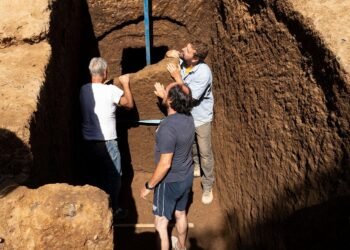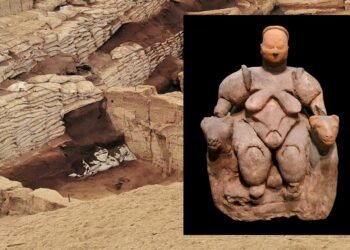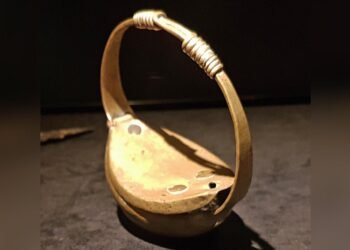Archaeologists from Goethe-Universität Frankfurt am Main have revealed a groundbreaking discovery at a 1st century CE Roman fort in Bad Ems, western Germany. After years of meticulous excavation, they uncovered a series of wooden defensive spikes strategically placed in ditches encircling the fort.

These spikes, arranged in a V-shape formation, served as formidable barriers against potential attackers, a defensive tactic referenced in Roman writings such as Julius Caesar’s “Gallic Wars.” Professor Markus Scholz from Goethe University Frankfurt emphasized the significance, stating, “The finds have remained preserved in their original functional construction context, offering a unique glimpse into ancient military engineering.”
The discovery, announced during a presentation in Mainz, marks the first time such defensive technology has been archaeologically unearthed, overturning previous reliance solely on written accounts. Dr. Heike Otto, Director General of Cultural Heritage Rhineland-Palatinate, lauded the comprehensive insight into the Roman Empire’s era facilitated by these findings.
The excavations, conducted as part of a multi-year research project involving various institutions, uncovered two Roman military camps near Bad Ems. These camps, believed to have been established in the 1st century CE for silver mining operations under Emperor Claudius, yielded invaluable artifacts.
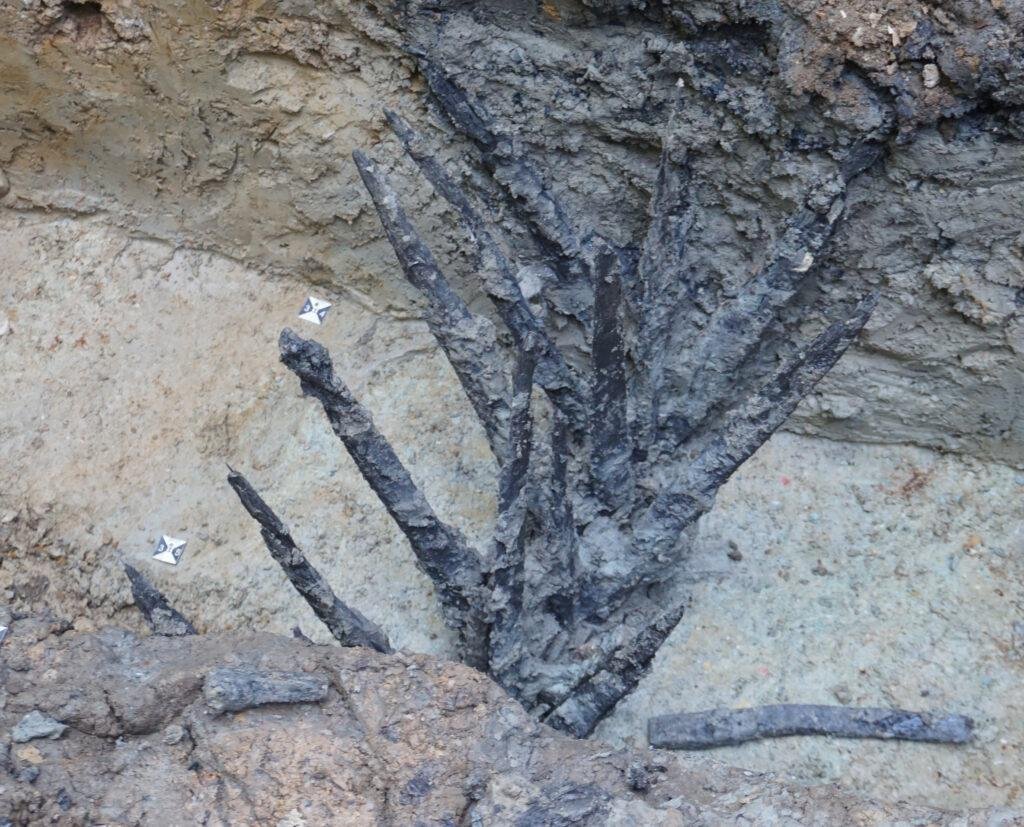
One camp, designated “Auf dem Ehrlich,” sprawled across an area of 8 hectares, accommodating up to 3,000 soldiers. It featured pointed ditches, earthen ramparts, and wooden towers, a testament to meticulous fortification techniques of the time. The smaller fort, nestled nearby, served a more specialized role, possibly controlling Roman mining activities.
Dr. Markus Wittköpper, an expert in wet wood preservation, highlighted the role of oxygen-poor wet soil in preserving these artifacts, describing the sediment layers as crucial to their remarkable state of conservation.
Restoration efforts, undertaken at the Leibniz Center for Archaeology (LEIZA) in Mainz, have allowed for the meticulous preservation of these ancient wooden stakes. “These seemingly inconspicuous wooden stakes are a small sensation for archaeology, which the specialist in Roman military matters in me particularly rejoices. Thus, I am personally very proud that the laboratories for restoration and conservation at LEIZA once again could contribute their unique expertise to permanently preserve the wooden finds,” remarked Professor Alexandra W. Busch, Director of LEIZA.
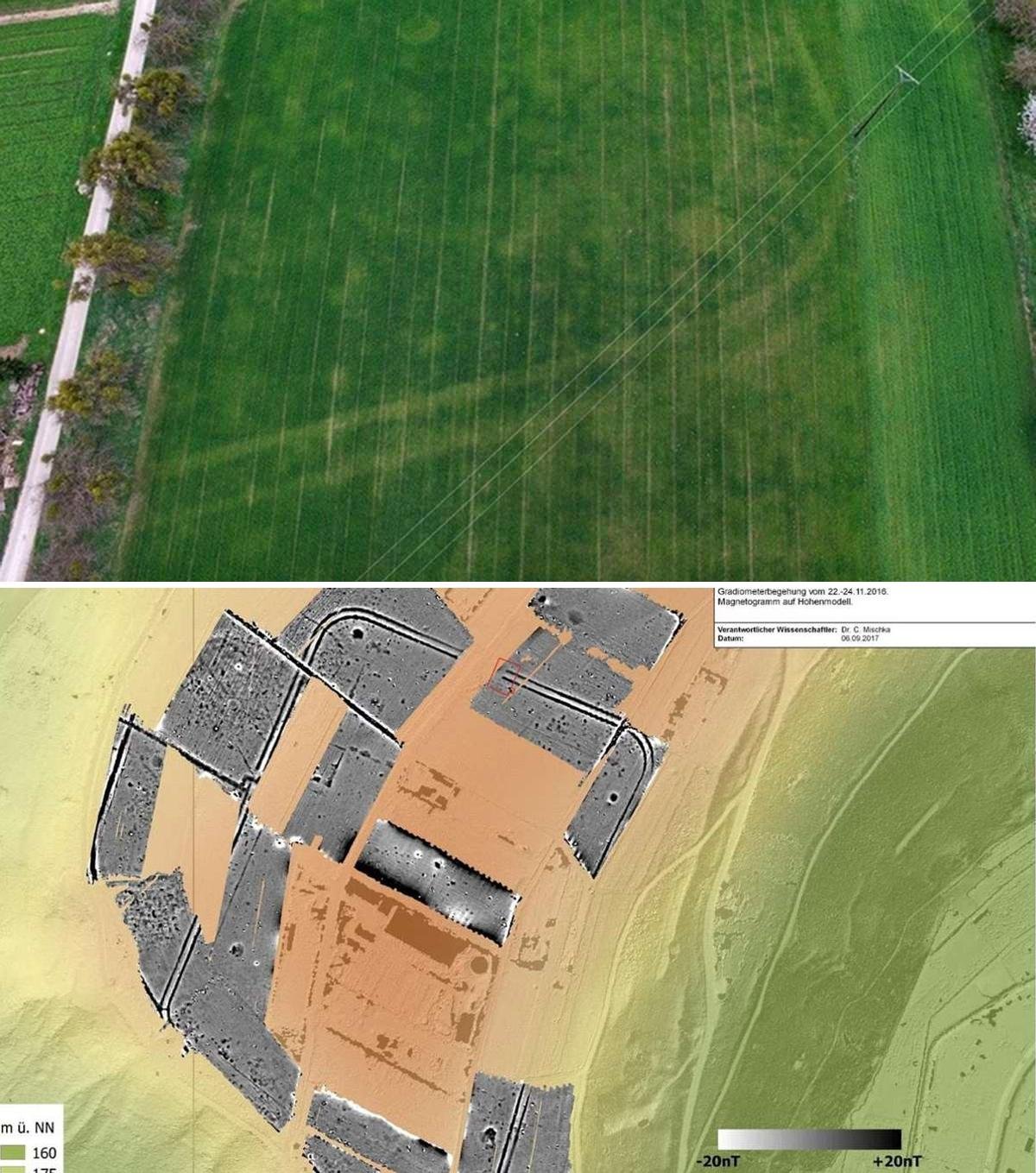
The book “The early imperial military installations near Bad Ems in the context of Roman mining” offers a detailed account of the project’s findings and implications for understanding Roman military and economic activities in the region.






